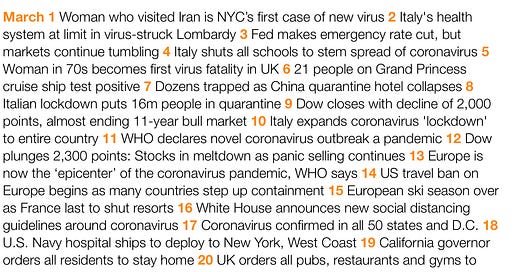Welcome to Just Two Things, which I try to write daily, five days a week, if I can manage it. Some links may also appear on my blog from time to time. Links to the main articles are in cross-heads as well as the story.
#1: The SUV catastrophe
I know: cars again. But there’s a striking data point in some of the International Energy Agency’s 2020 analysis. On average, because of the pandemic, overall carbon emissions fell by 7% globally—a far larger drop than after the financial crisis.
But one category bucked the trend: SUVs—sports utility vehicles—saw their emissions go up.
One of the reasons is that the world’s car companies have shifted towards SUVs to boost their flagging profits. Of course, the result of this is that they are exporting the external costs of those profits onto the rest of us.
And while you might think that this problem will go away as they introduce their electric SUVs, it doesn’t quite work like that. Because SUVs are so much bigger than other cars, their material impact (and therefore their lifetime emissions) are larger.
Around two thirds of all UK particulate emissions come from tyre, brake, and road particles—again bigger for SUVs. These generally have worse health effects than exhaust emissions. There are other pollution effects as well. SUVs cause more noise pollution because of their size and their weight. Although they’re sold on safety, they make their occupants safer but at the expense of other road users. And while the EU’s emission reduction targets will reduce emissions by weight, over time, and come with aggressive penalties, the existing vehicle mix has been partly ‘grandfathered’ in. So a manufacturer who was producing a lot of SUVs starts from a higher emissions baseline than a manufacturer who wasn’t.
This gap between private benefit and public cost is huge, in other words. Many of those costs fall on the most vulnerable members of society. I’d say that forms of regulation or market restriction were all but inevitable.
Yesterday’s item on Tesla’s market valuation was picked up by David Bent on Twitter—and he wrote a short thread. It draws on Bill Janeway’s book Doing Capitalism in the Innovation Economy. In one line: Janeway argues that speculative bubbles are necessary for the “creative destruction” that paves the way for a new round of technological innovation, but they need need to be widely drawn: betting on one horse doesn’t cut it.
#2: Pandemic stories
A few years ago, Eliot Weinberger wrote a compelling account of the Iraq war by summarising, in sequence, the news stories he “had heard about” it.
David Rainbird, an American creative director, has tried to do something similar for the pandemic year of 2020, distilling each day into a single headline from around the globe. It looks like the image below, which captures only a few weeks in March, and it will be available as a poster sometime this month. In the online version, each of the headlines is linked to the source story. The whole thing has a cumulative effect.
J2t#0015
If you are enjoying Just Two Things, please do send it on to a friend or colleague.



